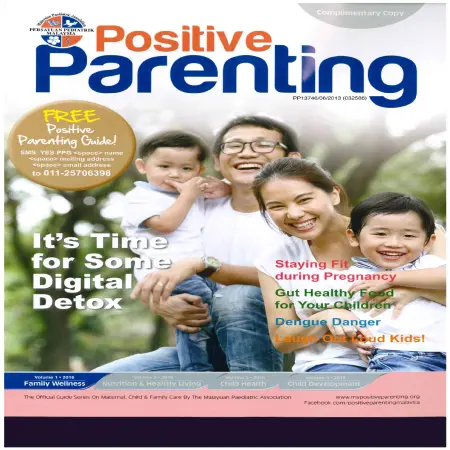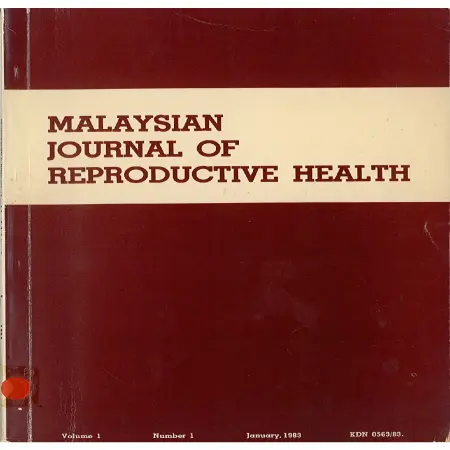Browse by Type
Results for Item type : "Article"
|
|
Development of a high-energy nutrient-dense meal as supplementary functional food for improving problem of stunted and under-nourished children
Item Type: Article
Editor:
Year: 00/12/2021
Abstract: Poverty, obesity and lifestyles are the most associated factors of vitamin D deficiency among urban-living children in Malaysia. Vitamin D is necessary for calcium absorption from food to ensure healthy bones and teeth. Vitamin D deficiency can cause soft and brittle bones disease known as rickets in children and osteomalacia in adults. Based on previous research, lack of nutritional knowledge among parents can contribute to nutrition deficiencies in children. To overcome this issue, nutritional education and awareness campaign among parents are needed. Besides campaign, the development of supplementary functional food which can provide crucial nutrients and energy that can assist in brain and body growth seems beneficial.
|
|
|
|
|
|
Determining the prevalence of family planning (FP) utilisation and its associated factors among adults in Malaysia: an online survey
Item Type: Article
Editor:
Year: 00/12/2021
Abstract: Family Planning (FP) is one of the pillars of Safe Motherhood Program in reducing maternal mortality and morbidity. Despite positive evidence on the benefit of family planning, its utilisation among Malaysian population is still lower than expected. This study aimed to determine the prevalence of family planning utilisation and its associated factors among adults in Malaysia.
|
|
|
|
|
|
Differentials in sexual and reproductive health knowledge among East Malaysian adolescents
Item Type: Article
Editor:
Year: 00/00/2019
Abstract: The aim of this study was to assess the knowledge of East Malaysian adolescents on sexual and reproductive health issues. Data were collected in March–July 2015 from 2858 adolescents aged 13–18 years from selected East Malaysian secondary schools using a self-administered questionnaire. Twelve items relating to sexual and reproductive health were used to measure respondents’ knowledge based on their responses ‘True’, ‘False’ or ‘Don’t know’, with the proportion of correct answers being the variable of interest. Cronbach’s alpha for the twelve items was 0.761 and the mean knowledge score was 6.8. While the majority of the respondents knew that a woman can get pregnant if she has sex with a man and that HIV and AIDS can be transmitted through sexual intercourse, knowledge about Malaysia’s abortion laws, that a woman can get pregnant if she has sex only once and that people with sexually transmitted infections may look healthy was poor. Older respondents and those from urban schools reported significantly higher knowledge than younger respondents and those from rural schools, respectively. More emphasis should be given in schools to the specific topics for which low levels of sexual and reproductive health knowledge were found, with greater attention being given to younger adolescents and those in rural areas.
|
|
|
|
|
|
Development of Malaysian women fertility index
Item Type: Article
Editor:
Year: 00/11/2018
Abstract: A fertility rate is a measure of the average number of children a woman will have during her childbearing years. Malaysia is now facing a population crisis and the fertility rate continues to decline. This situation will have implications for the age structure of the population where percentages of senior citizens are higher than percentages of people aged below 5 years old. Malaysia is expected to reach aging population status by the year 2035. As the aging population has a very long average life expectancy, the government needs to spend a lot on medical costs for senior citizens and need to increase budgets for pensions. The government may be required to increase tax revenues to support the growing older population. The falling fertility rate requires proper control by relevant authorities, especially through planning and implementation of strategic and effective measures. Hence, this paper aims to develop a fertility index using correlation and Shannon's entropy method. The results show that Selangor, Johor, and Sarawak are among the states with the highest values of the fertility index. On the other end of the spectrum, Terengganu, W.P. Labuan, and Perlis are ranked in the last positions according to the fertility index. The information generated from the results in this study can be used as a primary source for the government to design appropriate policies to mitigate dwindling fertility rates among Malaysian women.
|
|
|
|
|
|
Disconnect digitally, reconnect emotionally
Item Type: Article
Editor:
Year: 00/00/2016
Abstract: Without a doubt, digital is the future. However, we do need to know where to draw the line and prevent ourselves from overindulging in it. Failure to do so could lead to digital addiction. It is fairly common nowadays to see parents handing their smartphone or tablet to their child to keep them entertained.
However, this is where parents will need to exercise self discipline on their part to avoid the pitfalls. As parents, you should lead by example and serve as a role model for your child to emulate as he grows. As the saying goes “Too much of a good thing is a bad thing!”
|
|
|
|
|
|
Defining child abuse and neglect
Item Type: Article
Editor:
Year: 00/00/2014
Abstract: Abuse and neglect are terms that are often used interchangeably. However, these terms represent two different types of abuse- abuse occurs when a person acts against a child (e.g. physical abuse) while neglect occurs when a person fails to act for a child (e.g. leaving a child at home without care.
|
|
|
|
|
|
Determinants of neonatal outcome in a Malaysian Maternity Hospital, 1980-1981
Item Type: Article
Editor:
Year: 00/01/1983
Abstract: The compilation and analysis of basic perinatal statistics in the Maternity Hospital, Kuala Lumpur is described. The study period covers the years 1980-1981. Determinants of neonatal mortality include very low birthweight (<1.5 kg), a gestational age of less than 32 weeks and clinical conditions of asphyxia, bacterial sepsis and respiratory distress syndrome. A proposal for a clinical classification of neonatal mortality is advanced and implications for a wider applicability of this approach is suggested to better evaluate perinatal performance in hospitals all over the country.
|
|
|
|









